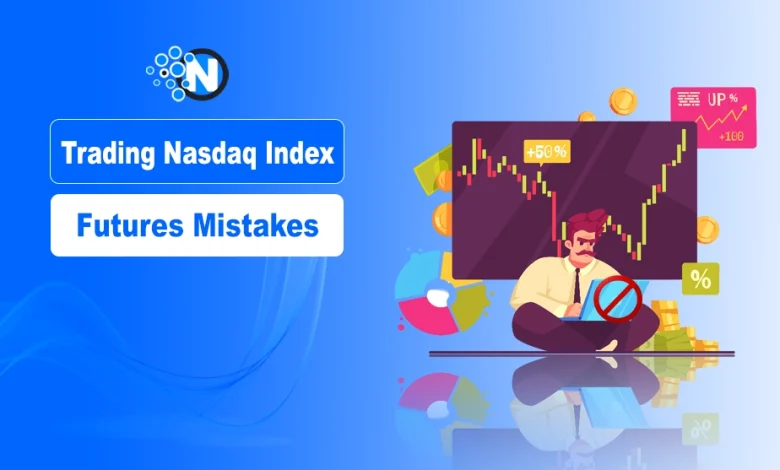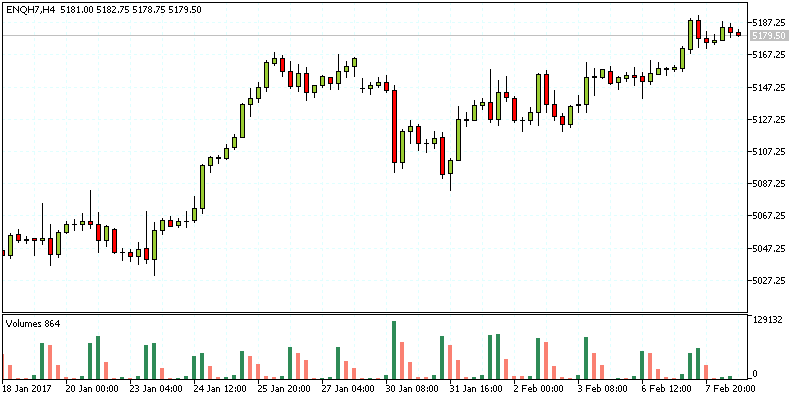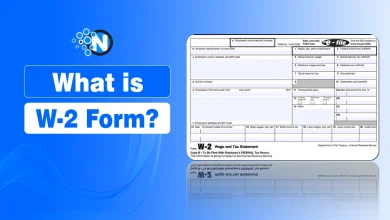Top Mistakes to Avoid When Trading Nasdaq Index Futures

Trading Nasdaq Index Futures offers opportunities to generate profits regardless of market conditions. But this method of trading is tricky, and lots of new traders make mistakes that can disrupt their chances of success. After knowing what these problems are and how to avoid them, you will be able to improve your strategy and enjoy better results.
In this article, I will explain the most common mistakes traders make when trading Nasdaq Index Futures and provide practical tips for avoiding them.
Let’s begin!
What is the Trading Nasdaq Index Futures?
Nasdaq Index Futures give traders a way to predict changes in the prices of the Nasdaq-100 Index which includes 100 major non-financial Nasdaq companies. Trading of futures on the CME includes a variety of contract sizes like the E-mini Nasdaq-100 (NQ) and the Micro E-mini Nasdaq-100 (MNQ), making them open to any trading account, whether big or small.
With Nasdaq Index Futures trading, traders decide in advance how much the index is worth in the future. Payments for these contracts are made only in cash; there is no physical transport of assets like for other contracts. Thanks to ETFs, traders can invest in many technology companies by owning one fund instead of many individual stocks.

Benefits of Trading Nasdaq Index Futures
Trading Nasdaq Index Futures offers several benefits that you can enjoy with Nasdaq futures today:
- High Liquidity
Nasdaq Index Futures are among the most actively traded futures contracts, ensuring tight bid-ask spreads and efficient order execution. - Leverage
Futures trading allows traders to control large positions with a relatively small amount of capital, amplifying potential returns (but also increasing risk). - Diversification
Instead of buying individual tech stocks, traders can gain exposure to the entire Nasdaq-100 Index in a single trade, reducing company-specific risk. - Extended Trading Hours
Nasdaq Index Futures trade nearly 24 hours a day, allowing traders to react to global events and market movements outside regular stock market hours. - Hedging Opportunities
Investors can use Nasdaq Index Futures to hedge against potential losses in their stock portfolios, protecting their investments from market downturns. - Cash Settlement
Since these futures contracts are cash-settled, traders do not have to worry about the complexities of physical delivery.
Mistakes to Avoid When Trading Nasdaq Index Futures
1. Trading Without a Plan
A lot of traders enter the market without a clear plan, hoping that their gut will tell them which deals will make them money. This method is very risky and usually ends in losses. These things should be in a good selling plan:
- Entry and exit strategies: Write down the rules for when you will buy or sell something.
- Rules for managing risk: Set stop-loss and take-profit amounts to keep losses to a minimum and protect gains.
- Position sizing guidelines: Figure out how much money you want to put into each trade.
- Market analysis techniques: To find trade opportunities, use both technical and fundamental research.
Traders are more likely to make decisions based on their feelings than on thinking if they don’t have a plan. This can lead to unpredictable results.
2. Ignoring Nasdaq Futures Today as a Market Signal
One of the traders’ first mistakes is jumping into trades without looking at Nasdaq futures today. These contracts show what is happening in the markets in real time before the stock market opens. Their reaction to new earnings reports when markets are closed, important economic figures and worldwide political news can affect how markets open the next day.
Trade context is missing if you don’t check the direction of Nasdaq futures before trading starts. Sharp changes in futures suggest the open could be volatile, so your approach has to fit this possibility.
3. Overlooking the Nasdaq 100 Futures Overview
Many people start trading without first understanding the steps involved. Taking a brief look at Nasdaq 100 futures explains the contract size, tick value, trading hours and margin requirements. For this reason, these contracts can be traded throughout almost 24 hours from Sunday through Friday, so traders have virtually non-stop access to market activity.
If traders lack the right knowledge, they may guess wrong about position size, the amount of risk they carry, and the best time to start trading. First, you should learn the rules of the contract before playing with real cash.
4. Misreading or Ignoring the Nasdaq Index Futures Chart
Many traders in futures trading use technical analysis, but often either misunderstand signals or fail to notice them. A chart for the Nasdaq index futures allows you to see trends, essential support and resistance points and when the momentum is strong or weak.
Not reviewing the chart can make one take bad positions, look for highs or lows or pass up obvious trend reversals. Using moving averages, RSI or different candlestick patterns, you can improve your ability to make trades at the right time. Every day, traders should check the chart and organize their approach according to the current market trends.
5. Overleveraging Without Risk Control
Leverage in Nasdaq futures is one of its greatest advantages – and its biggest danger. Traders often make the mistake of taking oversized positions to chase significant gains, underestimating how quickly the market can move against them.
Traders can suffer large drawdowns without strict risk management rules, like stop losses, position sizing, and daily loss limits. Leverage should be used strategically, not emotionally.
6. Ignoring News That Moves Tech Stocks
The Nasdaq-100 Index is heavily weighted toward the tech sector. That means anything affecting big tech, like earnings reports, regulatory news, or interest rate announcements, can lead to sharp moves in Nasdaq index futures.
Many traders get caught off guard by sudden volatility simply because they weren’t watching the economic calendar or paying attention to earnings season. Staying informed is just as important as watching the chart.
Conclusion
Nasdaq index futures are a good choice, but you need a proper and prepared approach to benefit from them. Avoiding these common mistakes will significantly enhance your regular and confident trading.
To do well in futures trading, you need to keep risk moderate, analyze signals correctly and remain informed about changes in the market.




